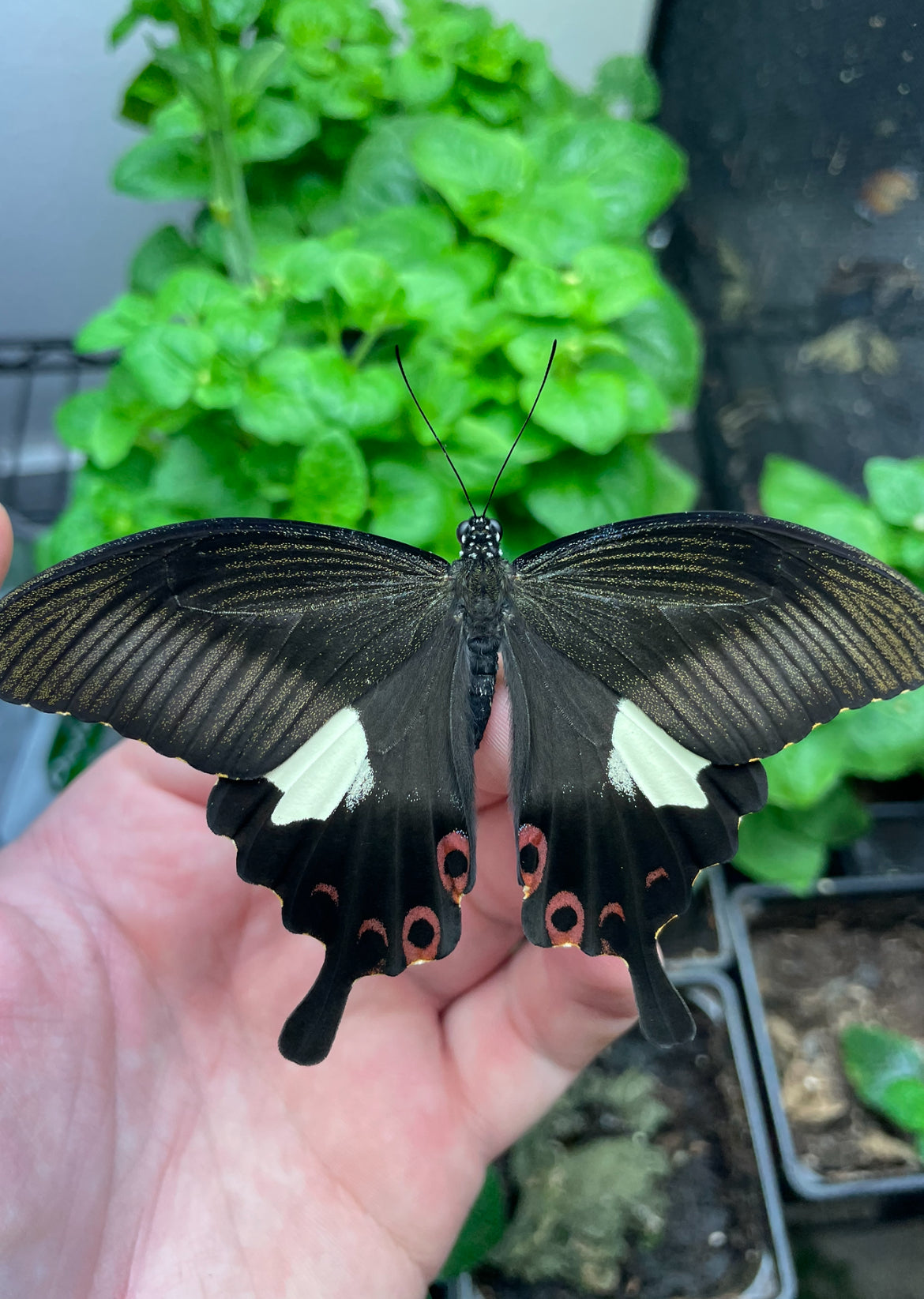Bugs & Butterflies UK
Red Helen Butterfly PUPAE (Papilio helenus)
Red Helen Butterfly PUPAE (Papilio helenus)
Couldn't load pickup availability
This striking swallowtail butterfly is native to parts of South and Southeast Asia and is known for its large size and beautiful black wings with white and red markings. The life cycle begins when the female lays small, spherical, yellowish eggs singly on the leaves of host plants. These host plants typically belong to the Rutaceae family, with Citrus species and Zanthoxylum being particularly favored. The careful placement of eggs on the underside or edges of leaves helps protect them from predators and environmental hazards, such as harsh sunlight.
Upon hatching, the larva (caterpillar) emerges and goes through several stages called instars. In the early instars, the caterpillar resembles bird droppings, an effective camouflage that helps deter predators. As it grows, it becomes green and develops a saddle-shaped marking. A distinctive feature of the larva is its osmeterium — a fleshy, forked organ that can be everted when threatened to release a foul-smelling substance as a defense mechanism. During this stage, the caterpillar feeds voraciously on the leaves of the host plant.
Once the larva reaches full size, it enters the pupal stage. The pupa, or chrysalis, is typically green or brown, which allows it to blend in with its surroundings. It attaches itself to a surface such as a stem or twig using a silk girdle. This stage lasts approximately 10 to 20 days, although the duration can vary depending on environmental conditions such as temperature and humidity.
The adult butterfly emerges from the chrysalis with large, jet black wings that are adorned with white patches and red spots near the tails of the hindwings. Males are known for a behavior called hill-topping, where they perch on elevated terrain to increase their chances of encountering females. Adults feed on nectar from a wide variety of flowers and are powerful fliers, often seen gliding through forested areas, woodlands, and occasionally gardens.
Overall, the life history of Papilio helenus reflects an adaptable butterfly that ensures survival and reproduction in diverse tropical and subtropical environments. This adaptability makes it a very easy species to care for at home or in a greenhouse setup. It flies well in captive conditions, feeding on flowers.
Difficulty - Easy (2/10)
Host plants - Citrus; various other related plants.
Conditions - Room temperature is sufficient however pupae emerge sooner with warmth & butterflies enjoy sunshine.
Lifecycle - Continually brooded; pupae capable of diapause.
Share

















